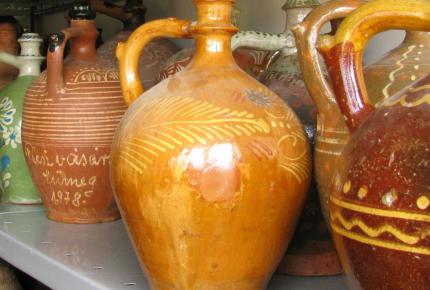The ethnographical collection is based on a group of items which was selected from the neighbouring villages during the attempts to establish a city museum in the beginning of the 1900s then in the 1930s when Göcsej tourism was popularized. This produced the Göcsej Collection and the largest part of its material was destroyed when the railway station was bombed in 1945. After establishing the museum ethnographer director Dr. Imre Szentmihályi claimed the remained four hundred pieces from Keszthely, then after working for several decades he brought the most significant material of peasant and gentry culture of Göcsej and its neighbourhood to the museum.
As the Göcsej Village Museum was built in the meantime and it also became part of the collection , we can say that we have artefacts and written materials from all walks of rural life, from the 18th century to the present day. The culture of construction and housing is represented in the collection most extensively, but the shepherd art, the textile – within this the culture of folkweave – the objects of folk religion and ceramic material are considerable as well. Besides the Ethnographic Museum the biggest mangle collection is found here.

